
Chinese people have been fighting against floods since ancient times, and the story of King Yu Tamed the Flood is familiar to us. In modern times, we have great water conservancy projects such as the Three Gorges. What tools do you use to resist floods? The first thing coming into our mind is the heavy sandbag filled with sand, isn’t it? An unexpected flood control sandbag appeared that turns waste into wealth appeared at the 2022 China Design Intelligence Award.

Sandbags for flood protection
2022 DIA Young Talents Awards of the Concept Group
Design team: Tian Haorui, Hu Jianzhen, Zhang Chi

01 Design comes from observation in life
Speaking of the origin of design, Tian Yurui, one of the team member, talked about the catastrophic flood disaster that hit Henan province in 2021. "The devastating flood occurred in Henan in 2021 has impressed me deeply, which has caused serious harm to society and environment,” he said. Living in Guangzhou, he found that floods are easy to occur in Guangzhou during the flood season every year, so flood control sandbags are provided at each subway entrance or exit, which occupy the walking space of passengers. So the team members raised serious questions about the existing flood control sandbags.
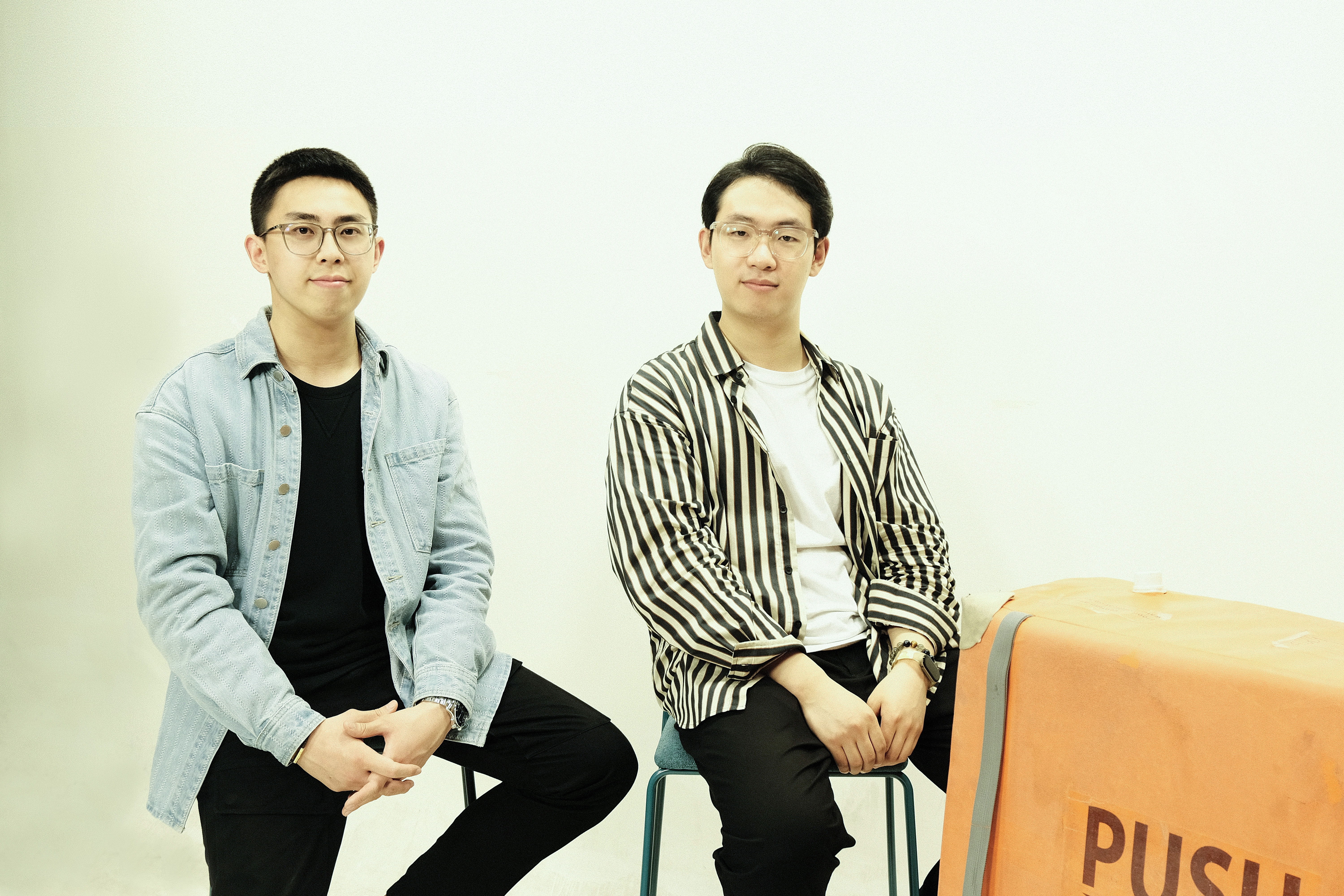
Photo of the team members
After survey, they found that traditional sandbags have some problems, such as slow water absorption, low drainage efficiency and difficulty in handling. After the flood, the toughest problem is that the sewage flows backward into the urban water supply system, and bacteria breed, so that it cannot provide clean drinking water for the affected people after the disaster, threatening people's lives and health. Therefore, the team tried to solve these real problems from the perspective of design.
02 Innovation lies in breaking through difficulties
In view of the above problems, the team proposed to improve the material, water absorption and drainage structure of the sandbag, so as to turn polluted floods into clean water resources through the drainage system of the sandbag. After testing more than 20 kinds of materials, they finally chose high-density sponge, PVC and textile cloth as the materials for making sandbags, so that the sandbags can absorb water quickly. Moreover, the sponge is light in weight, and the user can fold and compress the sandbag for fast transportation.
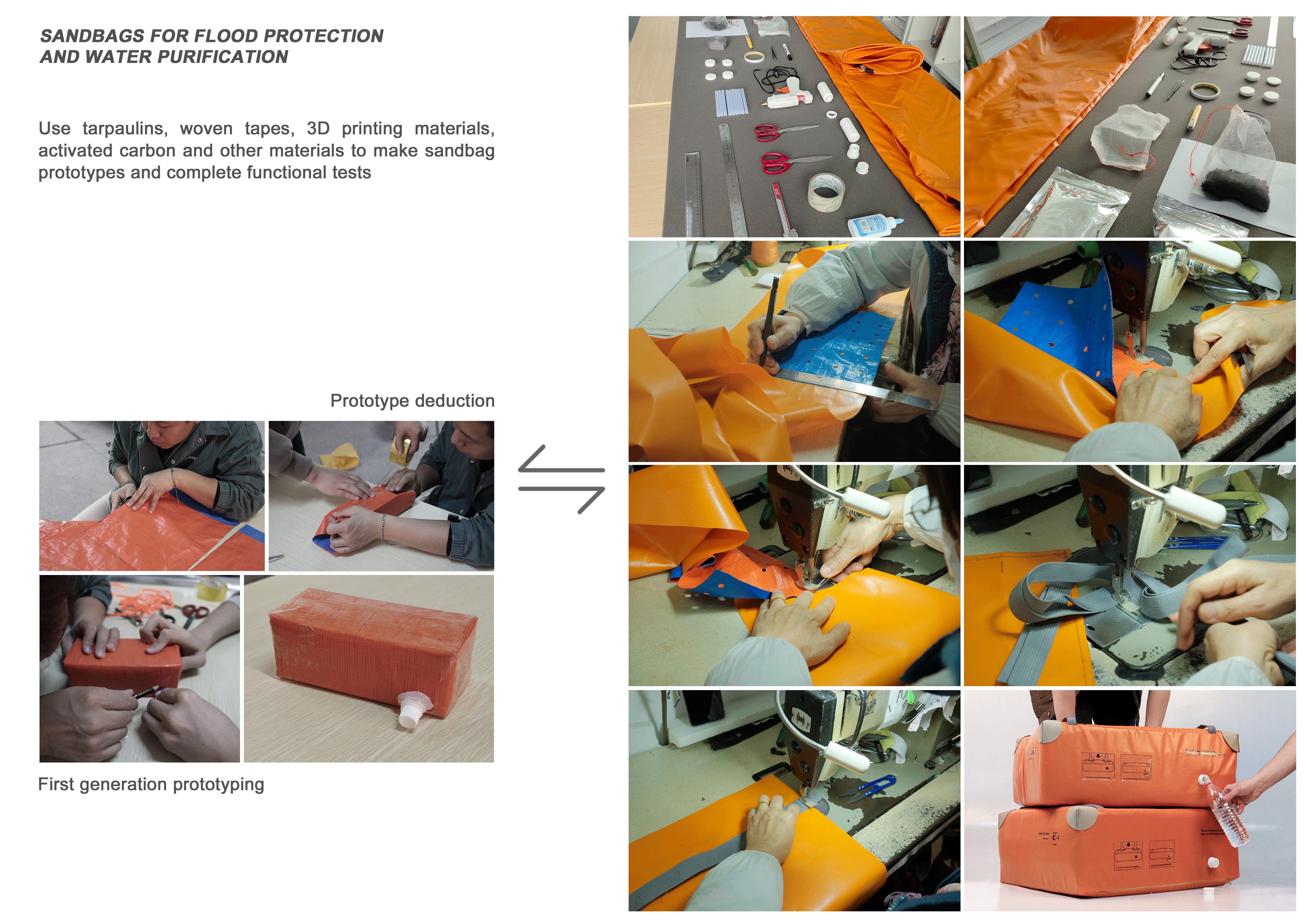
Iteration process of the product prototype

Design and test of the water purification system
For the water purification device, the team designed four filtration pipes with different water purification structures. Multiple tests showed that the double-wall pipes can realize the rapid water absorption and water outlet functions of the filtration system. Activated carbon, PP cotton filter element, diatom ooze and filter screen are used as filter medium in the water purification device, which can quickly filter sewage into clean water.
03 Humanistic care in design
In addition to function demand, the design team also focuses on meeting the use demand. The improved sandbag can enable users to press water out of the sandbag with their own top-down gravity, thus providing users with the most comfortable product use posture. The team used CATIA engineering virtual simulation system to evaluate the ergonomic comfort of the products, and parameterized, visualized and concretized the dynamic process of interaction between the user and the product. The test results showed that users were comfortable when handling sandbags.
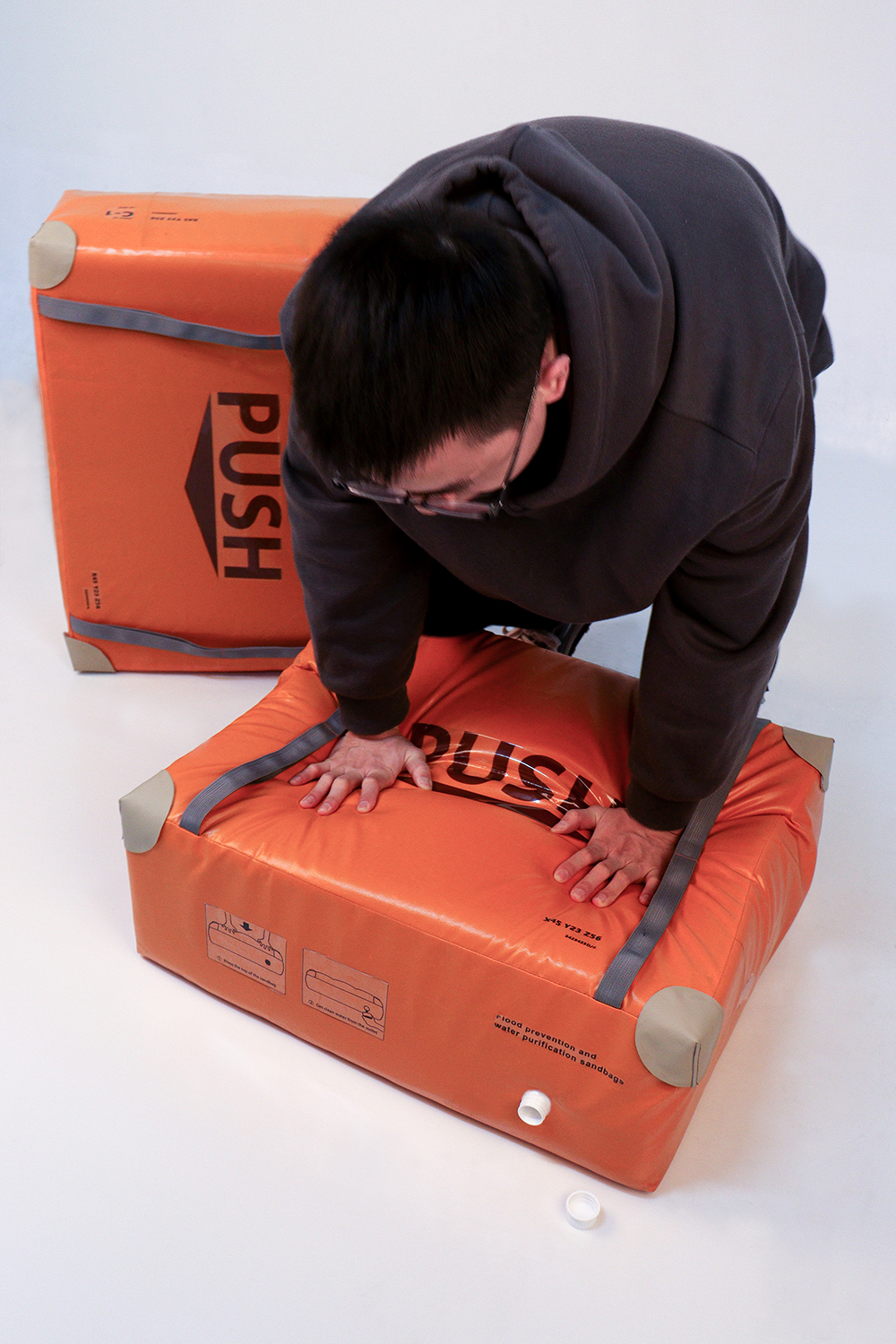
Labor-saving pressing mode
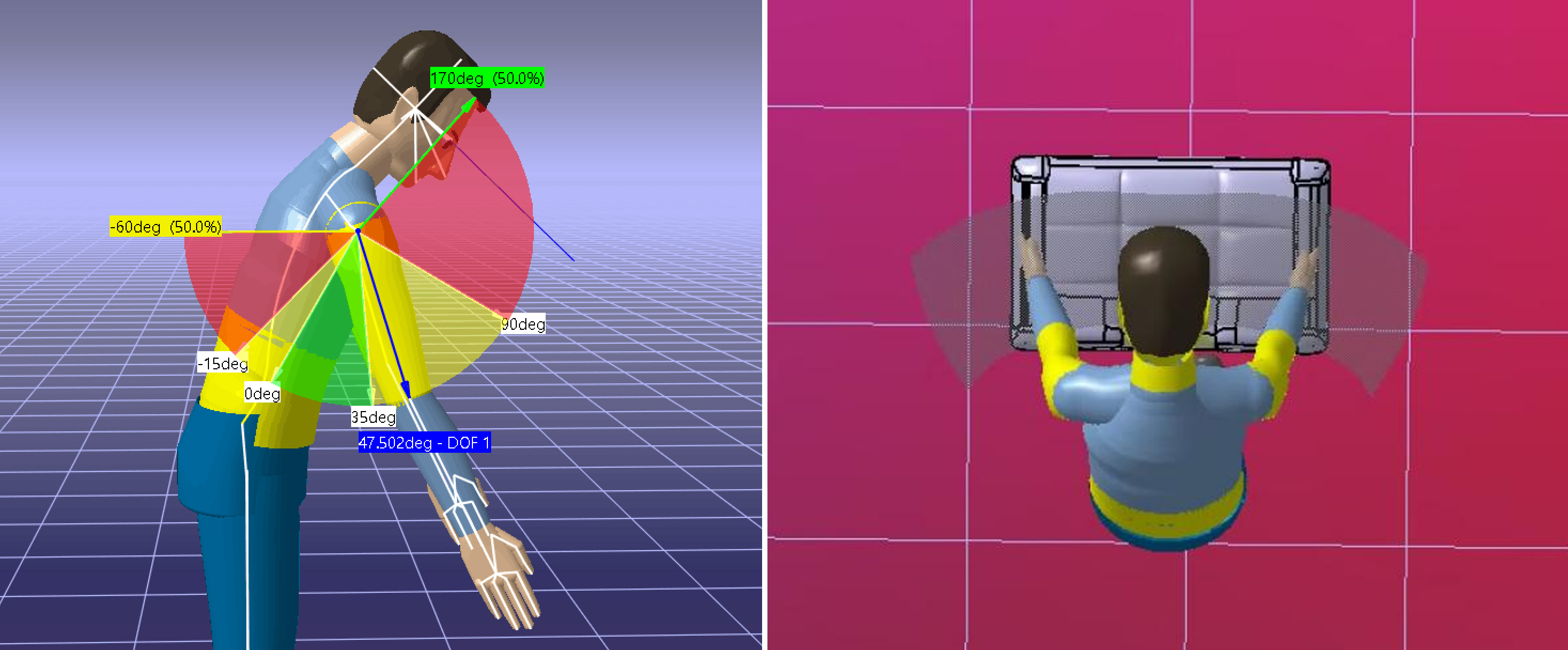
Test process of CATIA engineering virtual simulation system
In terms of appearance design, the rectangular sandbags can be overlapped and stacked more easily. The bright orange is adopted as the main color, so that users can find the sandbag quickly, and the bright color can also convey flood warning information to the public. The grooves on the sandbag and the texture on the surface can increase the friction on the surface and strengthen the sandbag's ability to resist floods. With the nylon strap, one or two people can handle the sandbag easily, which improves the use efficiency. The schematic diagram attached to the surface of the sandbag, can visually convey the use information to the user.

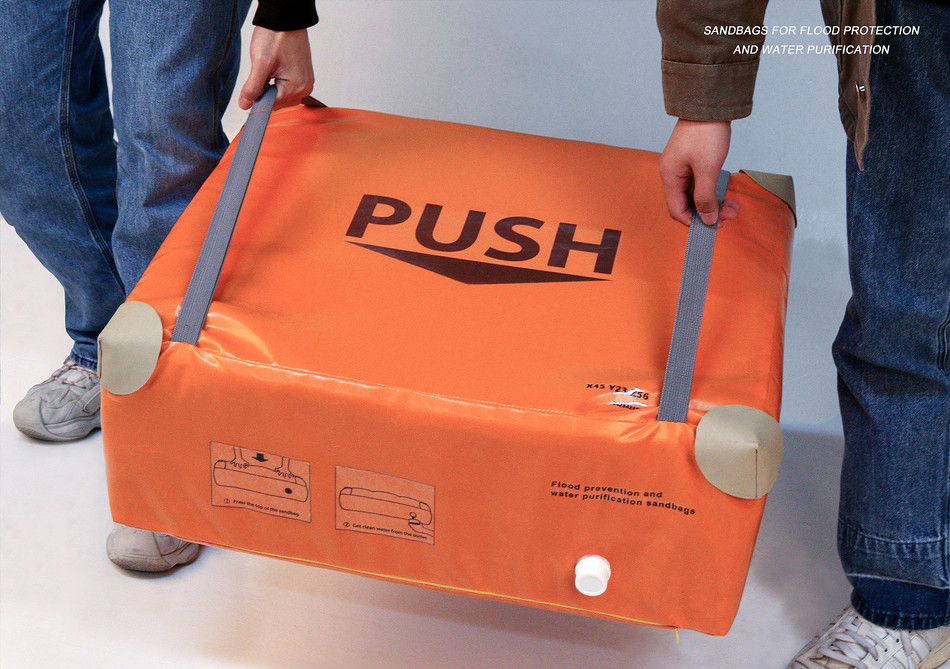
04 Product realization and iterative upgrading
Tian Haorui, the team leader, mentioned the next step to the DIA Committee, which is roughly divided into three aspects: First, they will cooperate with relevant companies engaged in the development of emergency products, so as to realize the social and economic value of the product. Second, they will communicate with relevant experts and put forward new improvement suggestions for the iterative upgrading of the product. He hopes that in the future, he can test the products in real flood disasters, find out the problems of the sandbag, and further optimize and improve it. Third, they will develop an emergency rescue system for flood disasters, which can assist the sandbags for flood control and water purification, improve the rescue capability of the product under emergency disasters in multiple dimensions, and achieve the three rescue goals of self-rescue, quick-rescue and mutual-rescue.
Today, despite the rapid development of science and technology, human beings still seems vulnerable in the face of natural disasters. We must always be prepared for natural calamities. Even though floods are ruthless, there is love in the world. With the power of design, we can provide the warmth of humanities care in emergency rescue, which will make us have the courage to move forward in the face of disasters.
DIA in the eyes of designers
Tian Haorui believes that DIA has set up a platform for designers to communicate design and creation. Designers from different countries can conduct in-depth communication through their works, realize the flow of design knowledge and thinking, and it also provides designers with the direction of future design development, and promote the spread of design culture in the context of global symbiosis. He said, "The ‘pyramid’ evaluation model proposed by DIA truly realizes the fairness, openness and transparency of the design competition by establishing a scientific selection mechanism, and the intellectual property rights of designers are respected and protected. ”
He also expressed sincere wishes to the DIA Committee, and wished that DIA could continue to prosper. He hoped that DIA would not only keep track of the follow-up trends of award-winning works in the future, but also establish an interactive platform for online communication among award-winning designers, judges and industrial companies.
Information provider | Design Team of Sandbags for Flood Protection
Editor | Wu Zhiwen
Executive Editor | Fan Fei
Reviewer | Yang Duoying
Gather Great Wisdom to Shape the Future of Intelligent Manufacturing
Follow us
You will learn more information about the 2013 DIA award-winning works

DIA WeChat official account
Scan the QR code to follow us and learn more about DIA events
